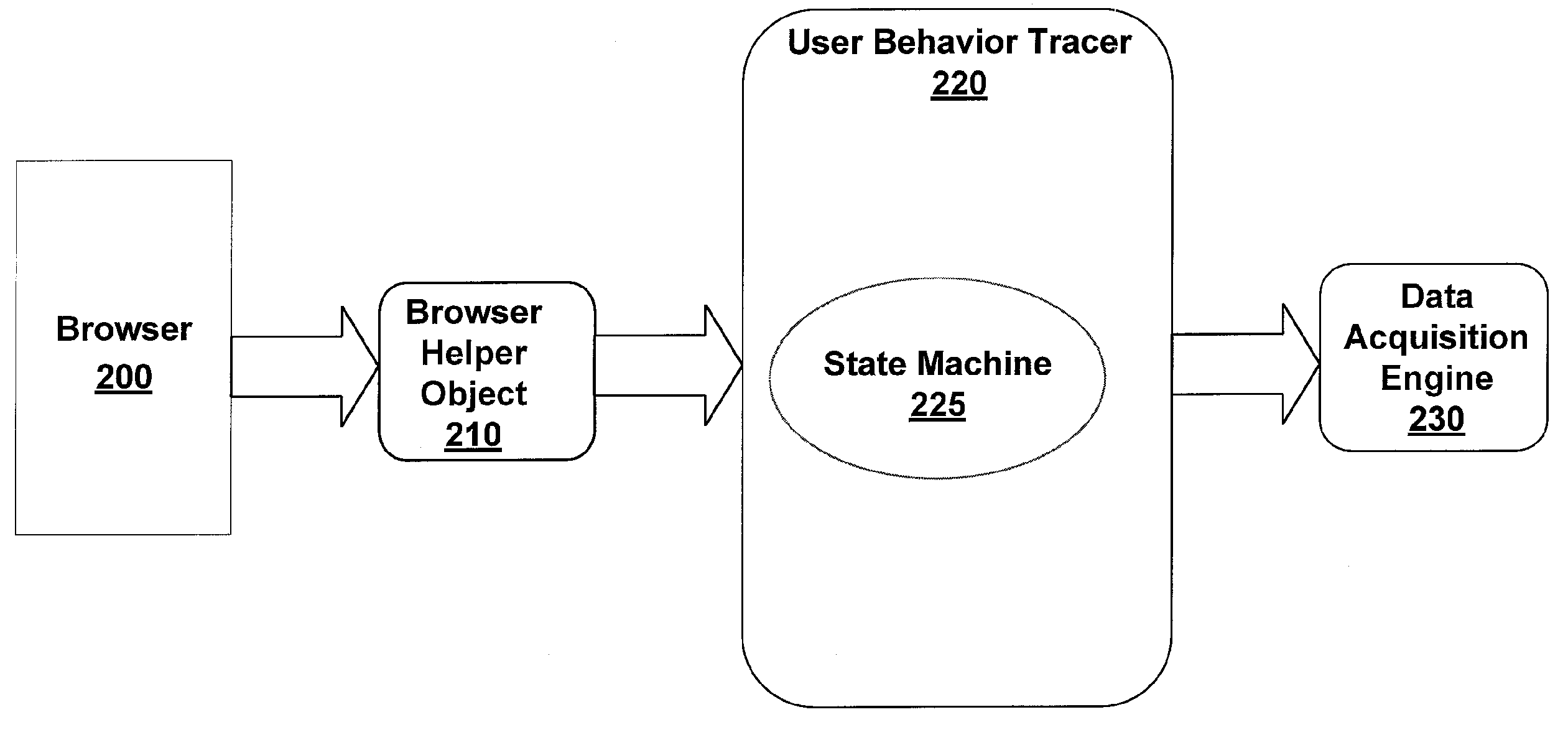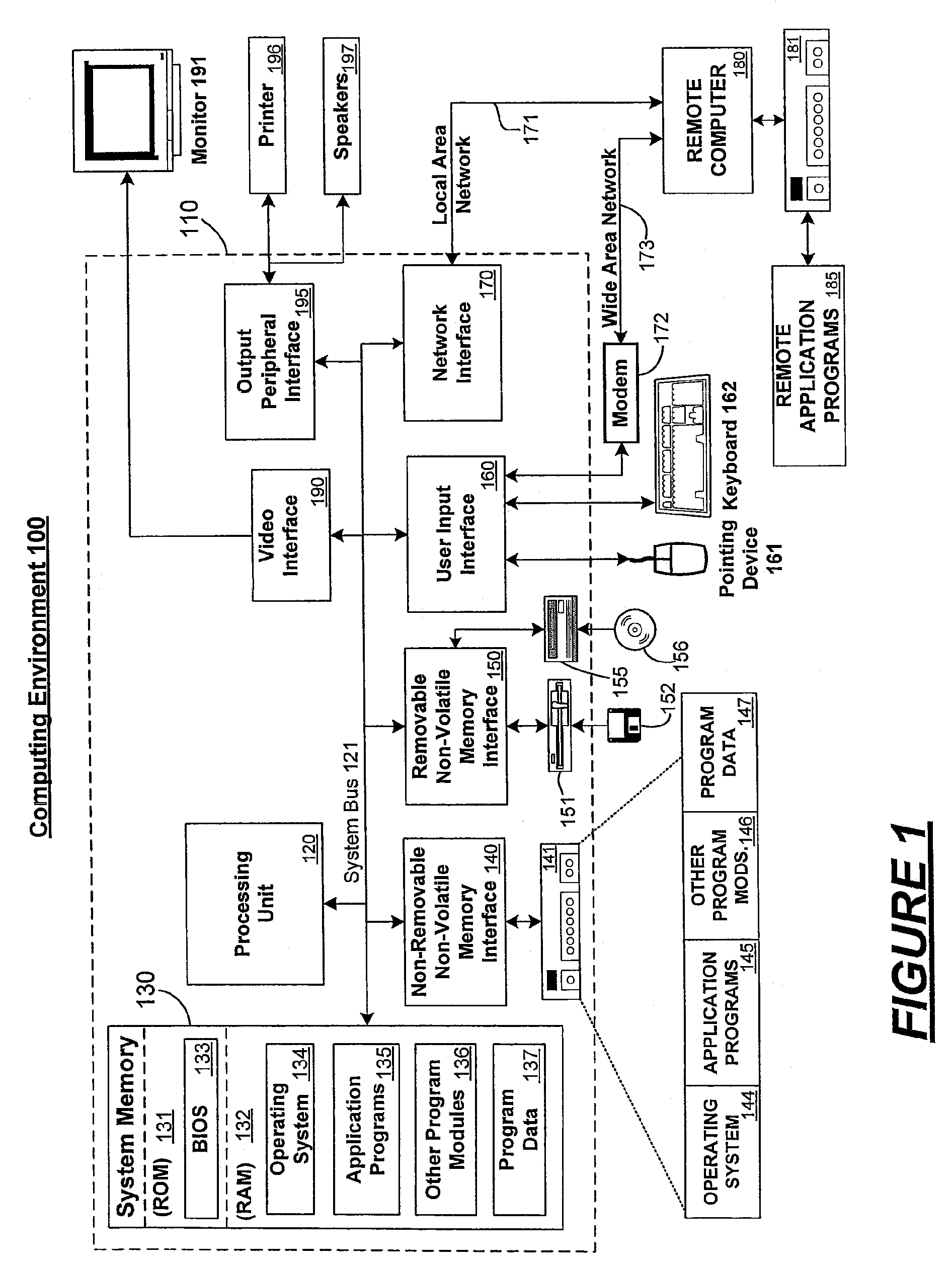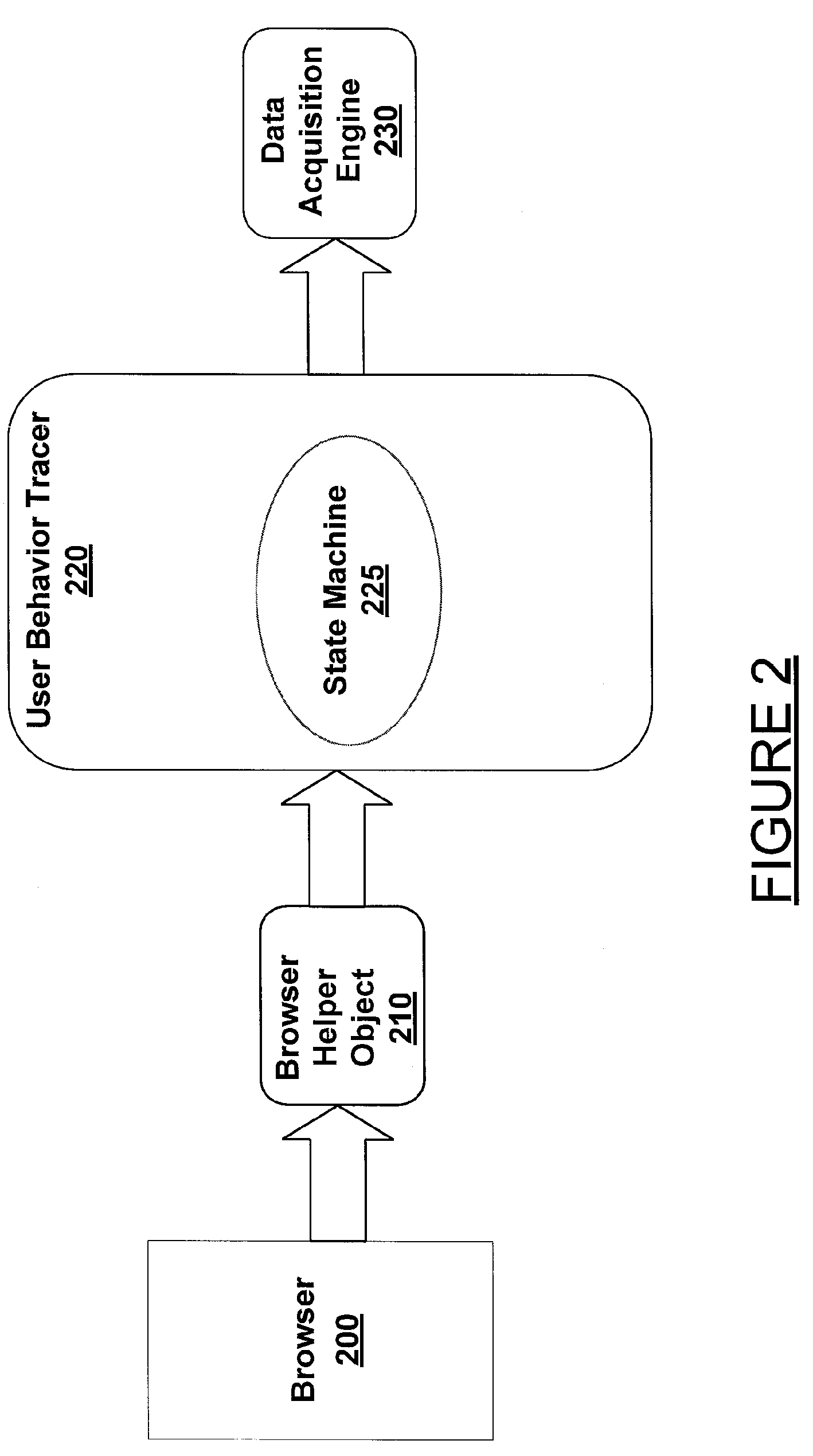Search system using user behavior data
a search system and user behavior technology, applied in the field of data search and retrieval, can solve the problems of limited utility, low score, and large amount of stored data for users to find data by direct examination
- Summary
- Abstract
- Description
- Claims
- Application Information
AI Technical Summary
Benefits of technology
Problems solved by technology
Method used
Image
Examples
Embodiment Construction
Overview
[0028]User feedback (explicit and / or implicit) is collected along with the context for that feedback. This allows context-dependent evaluations of the quality of search mechanisms. If one search mechanism produces results that garner better feedback than a second search mechanism, it can be determined that the first search mechanism is more successful at finding results for a user. This information can be used, for example, to create a relevance model to measure the effectiveness of a search system.
[0029]In one embodiment, context-based search mechanism user feedback is captured by tracking an event stream and following a state machine in order to determine the state of the user's interaction with the browser. This allows queries to be presented to the user in order to (1) track what state the interaction is in and (2) request explicit feedback from the user. Implicit feedback, such as the amount of time spent on a page, among other implicit feedback items, is also tracked. ...
PUM
 Login to View More
Login to View More Abstract
Description
Claims
Application Information
 Login to View More
Login to View More - R&D
- Intellectual Property
- Life Sciences
- Materials
- Tech Scout
- Unparalleled Data Quality
- Higher Quality Content
- 60% Fewer Hallucinations
Browse by: Latest US Patents, China's latest patents, Technical Efficacy Thesaurus, Application Domain, Technology Topic, Popular Technical Reports.
© 2025 PatSnap. All rights reserved.Legal|Privacy policy|Modern Slavery Act Transparency Statement|Sitemap|About US| Contact US: help@patsnap.com



